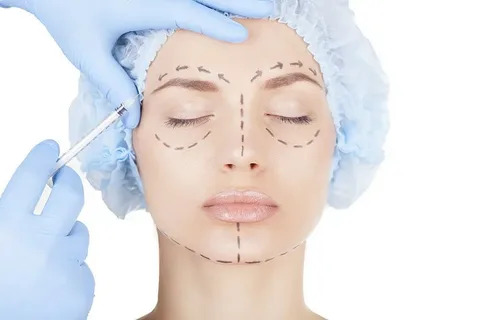
How Fat Grafting Systems Maintain Tissue Viability and Integrity?
Fat transfer has become a powerful solution in both cosmetic and reconstructive procedures. But the real success of any fat grafting procedure isn’t just about how much fat is moved — it’s about how much survives. That’s where fat grafting systems come in.
This blog explores how these systems are designed to preserve fat tissue quality, reduce complications, and deliver more consistent, long-term results. If you’re a medical professional or clinic decision-maker aiming for higher graft survival rates and fewer touch-ups, this blog is a must-read.
Overview of the Basics of Fat Grafting
Fat grafting, or fat transfer or lipofilling, is a process where fat is taken out of one body area and transferred to another. Facial rejuvenation, breast reconstruction, and body contouring are the most frequently treated areas with it.
Nevertheless, the success of this operation relies significantly on fat cell survival. When fat cells are dead or damaged, the outcome can be disappointing — causing volume loss, contour irregularities, or the necessity for revisions. Fat grafting systems have transformed the process here.
What are the Hidden Challenges in Fat Grafting?
When fat is removed from the body…it’s incredibly fragile. It faces damage from pressure, temperature, handling, and contamination. Without the right systems, up to 50% of grafted fat may die off after transfer — leading to volume loss, uneven texture, or the need for corrections.
This is where modern fat grafting systems stand apart. They’re not just tools — they’re engineered environments for protecting and delivering high-quality tissue.
Step-by-Step: How These Systems Preserve Viability?
- Gentle Harvesting for Minimal Trauma
Conventional fat harvesting tends to hurt tissue from too much force or through incorrect methods. With modern systems, however, controlled suction and specific cannulas are utilized to gently remove fat. This minimizes cellular trauma a great deal and maximizes the survival chance when transplanted.
As a result, more viable adipocytes are preserved for reinjection — increasing overall graft retention.
- Clean, Closed, and Controlled Purification
After harvesting, the fat will need to be processed to eliminate impurities such as blood, oil, and tumescent fluid. Centrifugation at high speeds or overprocessing will compromise cell membranes. Closed-loop filtration is utilized by advanced systems to clean fat while handling it minimally, retaining structural integrity in adipose tissue.
At this point, instruments such as an infiltration pump can be employed to introduce tumescent fluid uniformly to the donor site. This not only minimizes pain but also helps in clean fat removal, safeguarding the tissue as well as the underlying structures.
- Infiltration Pump Use for Consistency
From harvest to injection, controlled handling prevents more pressure or temperature fluctuations — both of which can destroy cells. Premium fat grafting systems have sterile, sealed conditions that minimize the risk of contamination and avoid oxidative stress on cells.
How Does Injection Technique Affect Fat Survival?
- Layered Microinjection for Better Integration
Once purified, the fat must be reintroduced into the body — but how it’s injected affects how well it survives. Instead of large-volume boluses, modern systems support layered microinjection, where small amounts are deposited in multiple tissue planes.
This technique improves vascular contact and oxygen delivery, boosting the fat’s chance of survival.
- Temperature and Pressure Control
Some systems now monitor temperature and flow pressure to prevent tissue stress. These controls protect fragile fat cells and reduce the risk of necrosis post-op.
By stabilizing the environment during transfer, fat grafting systems can ensure the tissue stays as close to its natural state as possible.
What Are the Benefits of Preserved Tissue Integrity?
- Higher Fat Retention
With less trauma and better vascularization, more of the grafted fat remains long term — often 70–80% or more. This reduces the need for additional procedures or overfilling during the first treatment.
- Fewer Complications
When fat cells die off, they can cause hard lumps or inflammation. But preserved, viable fat minimizes these risks significantly.
- Natural Look and Feel
Fat that survives properly integrates with surrounding tissue, creating smoother, more natural results — especially in areas like the face, breasts, or hands.
What Sets Modern Systems Apart?
Older, manual methods are slowly being phased out as clinics adopt smarter tools. Today’s systems aren’t just about moving fat from point A to B — they’re about doing it with care, control, and consistency.
Automation and closed-loop processes are becoming the new standard. They offer:
- Reduced operator variability
- Higher sterility levels
- Shorter procedure times
- Better patient outcomes
These features are transforming how providers approach fat grafting.
Conclusion
From superficial harvesting methods to restrained purification and focused injection techniques, fat grafting systems are the foundation of tissue viability and integrity. Not only do these developments further ensure fat survival, but they also minimize risks to a great extent while enhancing patient satisfaction. Selecting the proper tools — and proper partners — makes all the difference in bringing high-quality outcomes. It is for this reason that experts across the globe have faith in Cellmyx, a name committed to creating innovative solutions for better fat grafting procedures.
